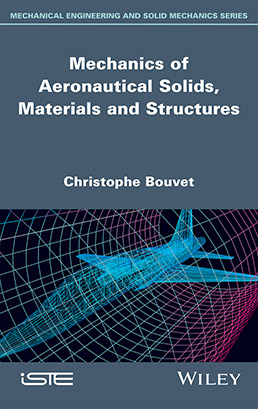
The objective of this work on the mechanics of aeronautical solids, materials and structures is to give an overview of the principles necessary for sizing of structures in the aeronautical field. It begins by introducing the classical notions of mechanics: stress, strain, behavior law, and sizing criteria, with an emphasis on the criteria specific to aeronautics, such as limit loads and ultimate loads.
Methods of resolution are then presented, and in particular the finite element method. Plasticity is also covered in order to highlight its influence on the sizing of structures, and in particular its benefits for design criteria.
Finally, the physics of the two main materials of aeronautical structures, namely aluminum and composite materials, is approached in order to clarify the sizing criteria stated in the previous chapters.
Exercises, with detailed corrections, then make it possible for the reader to test their understanding of the different subjects.
1. Stress.
2. Strain.
3. Behavior Law.
4. Resolution Methods.
5. Work-energy Theorem: Principle of Finite Element Method.
6. Sizing Criteria of an Aeronautical Structure.
7. Plasticity.
8. Physics of Aeronautical Structure Materials.
9. Exercises.
10. Solutions to Exercises.
Christophe Bouvet is Professor of structural mechanics at the ISAE-SUPAÉRO in France. His research focuses on the sizing and damage of composite structures at the Institut Clément Adler (ICA) in Toulouse, France.